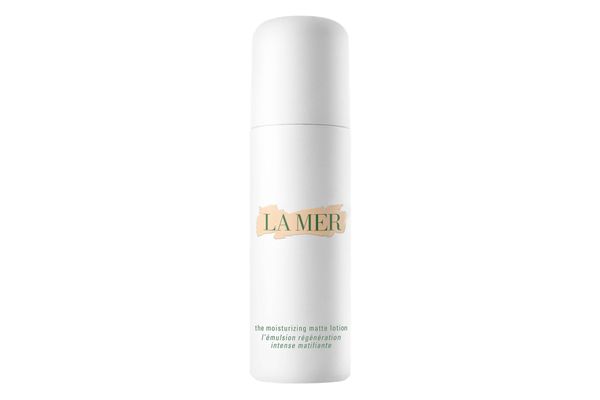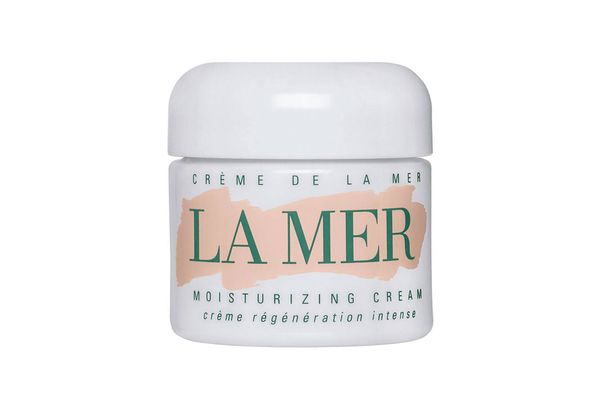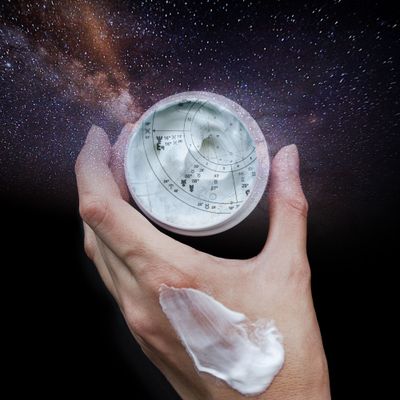
If beauty products could be admitted into the Illuminati, La Mer would be the first. The pricey moisturizer — it can run from $260 for its new Moisturizing Matte Lotion to $2,095 for a 16-ounce jar of the original — has a mythical origin story. According to the tale, a German rocket scientist named Max Huber invented it while trying to heal burns that he’d sustained in the lab. Not only did he cure himself, but he also stumbled upon what fans (like the Rock) swear is the best face cream of all time.
Huber was such an odd character, and the legend of La Mer’s creation is so fantastical, that it’s spurred a number of conspiracy theories. Some speculate that La Mer’s colorful founder is a fiction, perhaps invented by Estée Lauder (which now owns the brand). Others posit that La Mer is nothing more than fancy Vaseline. And a lot of people don’t care, so long as it doesn’t ever go out of stock at Bergdorf Goodman. Below, the Cut reveals some of the wildest conspiracy theories, and the truth.
Conspiracy theory: Max Huber isn’t real.
True or false? FALSE.
Bloggers and redditors have suggested that Huber is no more real than the Easter bunny, citing his lack of obituary. But “he’s definitely a real person. People have met him,” says Andrew Bevacqua, senior vice-president of research and development at the Max Huber Research Labs, who has worked at Lauder since 1986. At the La Mer labs in Melville, Long Island, which I visited last summer, there’s a framed photo of Huber (who shares a slight resemblance to Mitt Romney; see a photo of Huber here) grinning benevolently over present-day white-clad scientists.
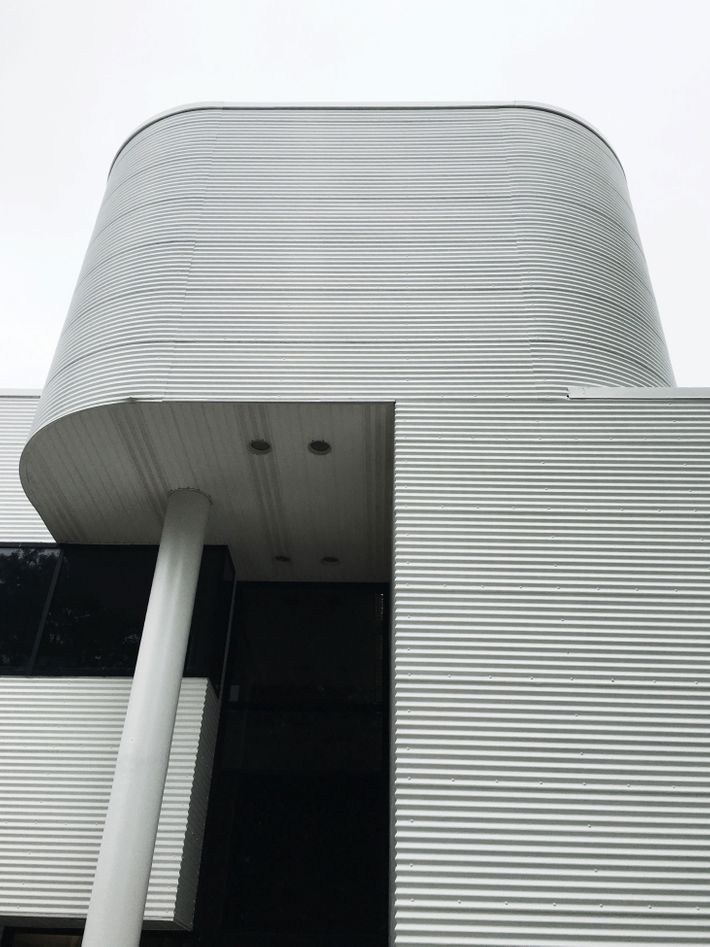
Can’t photographs be faked, though? What about hearing from someone who’s not on the La Mer payroll? Although Bevacqua has never met Huber, other people have.
“I’ll never forget it, because it was bizarre,” recalls Linda Wells, the Cut’s former beauty editor–at-large and former Allure editor-in-chief. “I was an assistant at Vogue. No one knew anything about him; he was an independent person making the cream. Someone more senior was supposed to meet with him but I ended up doing it because everyone was busy.”
“I had no office so I met with him in the lobby-ish area,” she goes on, “and he had this cream — not that different from the jar he has now. He told me the story about having chemical burns and developing the cream, and wanted to demonstrate how pure it was, so he stuck his finger into it. And ate it. Then he also put a finger into the cream and stuck it in his eye like it was a contact lens. There was the cream, all over his eye and eyelashes. It was unforgettable.”
Felicia Milewicz, former beauty director of Glamour, corroborates Wells’s story. “I was a young editor at Mademoiselle, and he told me he was a space scientist. He said he had a bad accident experimenting with aerospace and I specifically remember saying, ‘Are you injured? You don’t look injured.’ And he said, ‘No, no, that’s when I decided to do this cream. I couldn’t find anything that would make it heal.’ He said it took him ten years.”
“He also ate it in front of me. Now we see organic everything, but that was the beginning of it. His theory was, ‘If I can eat it, it’s good for me and it must be amazing for my skin.’ I only met him that once, and I don’t know about any of the conspiracy theories. Who knows, maybe I met with someone else! But I sat with a man who claimed to be him, and I was fascinated by him and told everyone about it.”
Elle also found a countess that Huber was so in love with that he sent her 200 jars of La Mer at a time, and designer Ralph Rucci, who is a reported friend of Huber’s.
Conspiracy theory: Huber was a scientist for NASA.
True or false? Inconclusive.
“He’s definitely a scientist and physicist who worked on spacecraft or rocket ships,” explains Bevacqua. “He may not have worked for NASA, but he was a rocket scientist.”
“He had some connection to NASA,” Wells recalls. “I don’t remember,” says Milewicz, but he said he was an aerospace scientist. According to La Mer’s official site, Huber was an “aerospace scientist.” Okay, for this one, the truth is out there.
Conspiracy theory: La Mer never even existed before being “purchased” by Estée Lauder.
True or false? FALSE.
According to the United States Patent and Trademark Office online database, “Creme de la Mer” was trademarked in 1983 (filed in 1981) by an individual named Maximilian A. Huber, of the Max Huber Research Laboratories in Canoga Park, California.
In 1995, the Estée Lauder companies officially acquired La Mer following Huber’s “alleged” (according to whom you ask) death, in 1991. There are two “Live” patents now for “Creme de la Mer,” filed in 1998 and 2011, respectively. The owners of both are La Mer Technology Inc., a corporation in Delaware listed with the address of 767 Fifth Avenue in New York. Case closed: Estée Lauder’s corporate offices are in this building.
Conspiracy theory: La Mer scientists play songs for the cream as it’s being created.
True or false: TRUE. Kind of.
Yes, the moisturizer that is meant to give you baby-soft skin is treated like a precious baby during its formulation. La Mer’s formula resolves around a fermented juice called the Miracle Broth. While each batch is fermenting, which takes about three months, technicians really do play the broth a tape of carefully selected sounds.
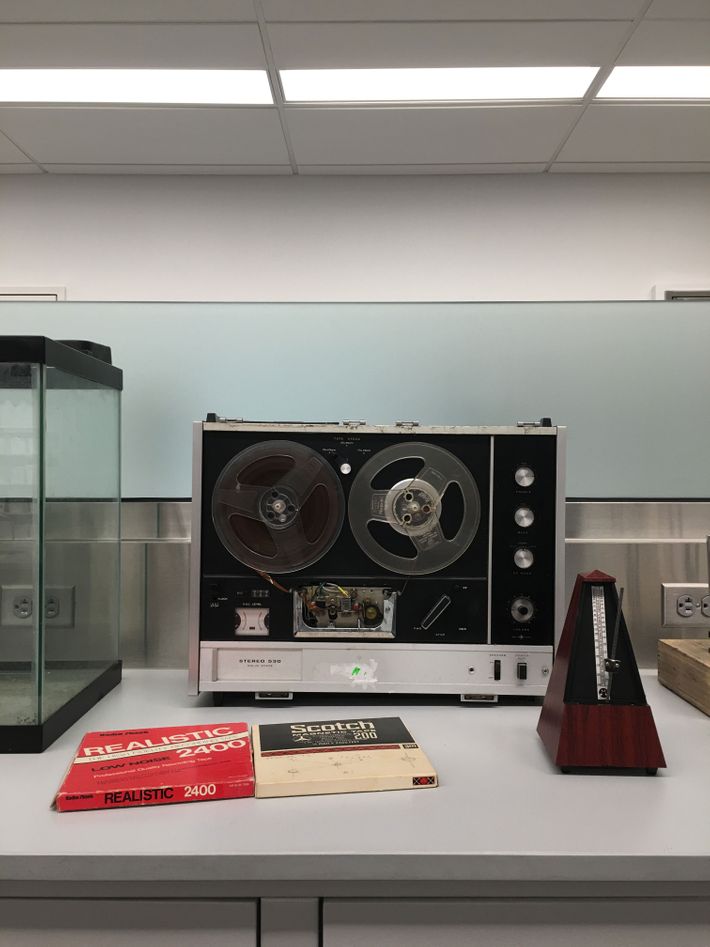
The noise, however, isn’t quite “Rock-a-Bye Baby.” Huber used to play a recording of the previous fermentation’s bubbling sounds each time, but Estée Lauder’s modern La Mer labs play a repeat. “We have his last tape and digitized it,” Bevacqua said. I have listened to this tape, and it sounds kind of like this YouTube video of a stomach gurgling loudly.
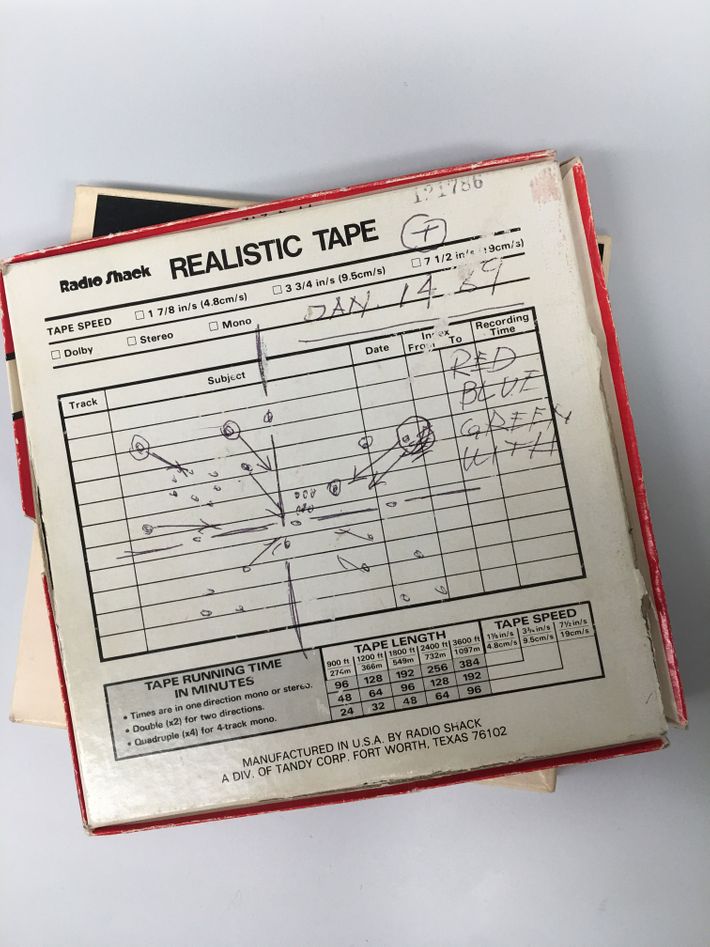
If you think this is crazy, you aren’t alone. Bevacqua was floored when he learned that he had to provide the Miracle Broth with a soundtrack. “I couldn’t understand why it could be necessary to do that. I thought creating the broth was enough. When Max’s daughter told me about it, I thought she didn’t understand because she wasn’t a scientist,” he said. “But we tried it without the sound waves, and the data showed that when it had sound waves, the broth was much more active.” He added that there are studies that show that sound waves can have an impact on chemical reactions, so there’s some science behind it, after all.
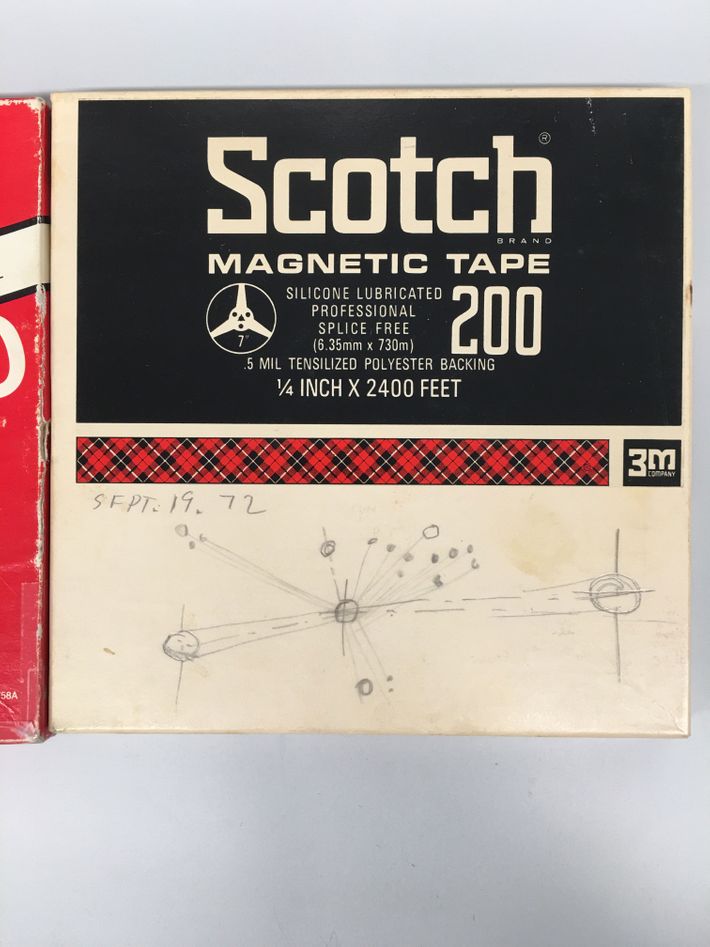
Conspiracy theory: Estée Lauder hired a medium to contact Max Huber from the beyond for help re-creating his formula.
True or false? TRUE.
Elle reported that former Estée Lauder research and development head Joseph Gubernick consulted a medium when initial attempts to re-create the La Mer formula following Max’s death were unsuccessful. Gubernick came to Bevacqua with notes that he said he had gotten “from Max” via the psychic consultant. It seemed Max had encouraged playing sound waves, as well as pulsed light, during the fermentation process.
“When I told that story a while ago, my communications group told me not to tell it again,” says Bevacqua. “An ex-boss of mine was giving me grief: ‘You made me sound like a kooky person!’ But it is true. We do a lot of strange things in research and development that don’t always sound so scientific. I don’t know whether it helped me or not. But it did get information from someone who claimed to have psychic energy.”
Conspiracy theory: La Mer contains booze.
True or false: TRUE.
Yes, La Mer contains a boozy lime and tea mixture that might seem more fitting for a southern-inspired cocktail bar. Officially, it’s called the Lime Tea Extract and it’s trademarked by the Estée Lauder corporation. According to Bevacqua, a fermented, antioxidant-rich mix of hand-picked lime rinds and alcohol go into the cream. “Max macerated the lime rinds in 100 proof vodka back in the day,” Bevacqua explained. Nowadays, alcohol is regulated, so they have to use denatured alcohol in the formula.
Conspiracy theory: Max Huber consulted astrology to create La Mer.
True or false: TRUE.
According to Bevacqua, Huber used to chart out the astrological alignment of each batch of Miracle Broth. It’s unknown what effect it had upon the process, but the Estée Lauder team discovered hundreds of pages of astrology charts in Huber’s former labs. To the disappointment of Susan Miller fans everywhere, astrology is not involved in La Mer’s present-day formulation.
Conspiracy theory: La Mer is really just a lot of seaweed extract.
True or false: FALSE.
This theory appears all over the internet, even on the Paula’s Choice website. Seaweed is indeed a primary ingredient in La Mer, but it’s not an extract. “There are several different types of seaweed in the Miracle Broth. The primary version is giant kelp called Macrosys pyrifera, which is the best quality. We harvest it by hand, put it on ice, and it’s shipped the same day to Melville, New York,” explains Bevacqua.
Why does this matter? Because other brands use extracts. Bevacqua even says Estée Lauder experimented with simpler, faster options, but the product wasn’t as good. “Many people can use an extract. But we take the kelp, and ferment it to become something different than what we started with. No other brand can do the same fermentation we do because it’s not published. The fermented Miracle Broth is anti-inflammatory, which is its main benefit.” Inflammation can cause many skin problems, including puffiness, irritation, and redness.
Even if you don’t believe in the fermentation, studies show that seaweed does have hydrating benefits to the skin. Dr. Joshua Zeichner, director of cosmetic and clinical research in department of dermatology at Mount Sinai Hospital, explains that seaweed kelp is rich in minerals and is also known to have a benefit in wound healing.
Conspiracy theory: La Mer is just fancy Vaseline.
True or false? FALSE.
“There is petrolatum in La Mer,” Bevacqua confirms. Allegedly, there are many different grades of petrolatum and USP, an ultra-purified form, is used in La Mer. Vaseline is a lower-grade form of petrolatum.
Dr. Zeichner, who is unaffiliated with La Mer, adds, “You could call it Vaseline Plus. It has a totally different consistency. Likely the base is similar to what is used in other products and the ingredients are similar to those in other moisturizers. But the quality may be better. You can’t turn over two bottles with the same ingredients and say that because they have the same ingredient list, they are the same.”
Dr. Dan Belkin, an associate at the Laser and Skin Surgery Center of New York and another dermatologist unaffiliated with the brand says, “La Mer seems to have glycerin at its base. Glycerin is both a moisturizer and humectant, which is good for the skin. Humectants prevent water loss and petrolatum is the most occlusive, which prevents 99 percent of water loss.”
Conspiracy theory: Like Biggie and Tupac, Max Huber is still alive somewhere.
True or false? FALSE.
“If he was alive, where is his obituary?” some internet sleuths want to know. But Elle sent a reporter to California to verify his death record, and she found an entry for a Maximillian Albert Huber, who passed away in Los Angeles on November 5, 1991. Now he lives on now through his cream (and any séances Estée Lauder might be conducting in the future).
If you buy something through our links, New York may earn an affiliate commission.



